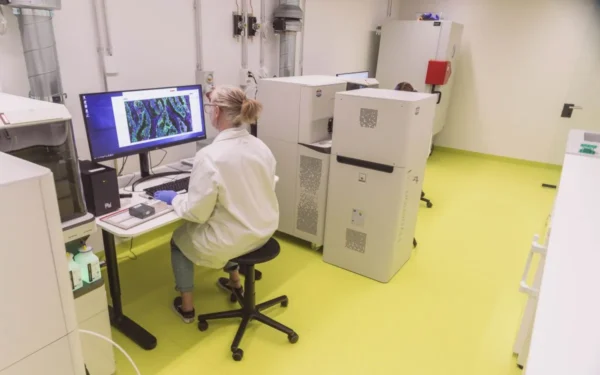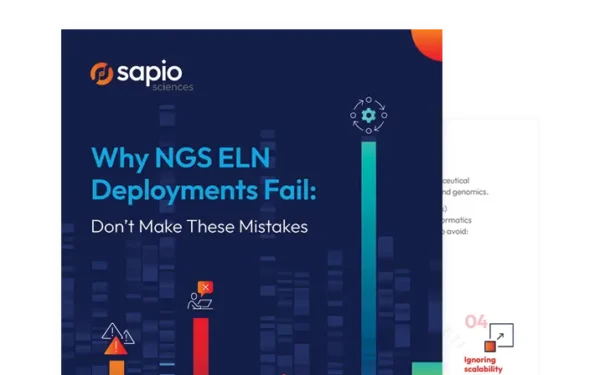Content quick links:
Unveiling the Genetic Code: The Era of Sanger Sequencing
Next-Generation Sequencing (NGS): Transforming Genomic Exploration
Genomic Profiling of Cancer Using Next-Generation Sequencing
Pathogen Tracking and Tracing with Next-Generation Sequencing
Next-Generation Sequencing Platforms
Third-Generation Sequencing: Real-Time Insights with PacBio and Nanopore Technologies
New Horizons: Challengers in the Sequencing Arena
Introduction:
Over the past few decades, genetics has undergone a transformative revolution fueled by the emergence of genetic sequencing technologies. Genetic sequencing technologies have evolved rapidly, and notable examples include Next-Generation Sequencing (NGS), which enables high-throughput and rapid sequencing of entire genomes. Sanger sequencing, a foundational method, was pivotal in the Human Genome Project and remains valuable for targeted DNA sequencing. Emerging technologies like third-generation sequencing, exemplified by platforms such as PacBio and Oxford Nanopore, offer long-read capabilities, enhancing our ability to decipher complex genomic regions and study structural variations with unprecedented accuracy. These powerful laboratory tools have revolutionized our capacity to decipher the information embedded in our DNA, providing first-time insights into the molecular foundations of life. This summary delves into the various genetic sequencing technologies, explaining their underlying principles and highlighting their profound impact across diverse scientific domains, from medicine to evolutionary biology.
Unveiling the Genetic Code: The Era of Sanger Sequencing
The Sanger sequencing method, also known as chain-termination sequencing, revolutionized the field of genetics and played a pivotal role in deciphering numerous genomes, including the Human Genome Project. Developed by Sanger and colleagues in the late 1970s, this pioneering sequencing technique is based on the selective incorporation of chain-terminating dideoxynucleotides during DNA synthesis. The process involves synthesizing DNA fragments of varying lengths, each ending at a specific nucleotide. These fragments are then separated by size using gel electrophoresis, and the sequence is then determined by identifying the terminal nucleotide at each position. Sanger sequencing quickly became the gold standard for DNA sequencing due to its accuracy, reproducibility, and ability to sequence relatively long stretches of DNA. This groundbreaking method introduced the concept of reading DNA and using labeled nucleotides to identify the sequence. Sanger’s innovation marked the inception of our ability to decode the genetic code, earning him a Nobel Prize in Chemistry in 1980.
In subsequent years, Sanger sequencing saw widespread application in numerous genomic projects. Completing the Human Genome Project (HGP) was one of its most notable achievements. The Human Genome Project was an ambitious scientific initiative to map and understand the complete set of human genes, unraveling the entire human genome. Launched in 1990, the project was a collaborative effort involving researchers worldwide, including the United States, the United Kingdom, Japan, France, Germany, and China. The HGP utilized cutting-edge technologies and methodologies, with significant contributions from Sanger sequencing. Over 13 years, the project achieved significant milestones, including completing a working draft in 2000 and finalizing the human genome sequence in 2003. This monumental achievement marked a pivotal moment in the history of genetics and paved the way for groundbreaking advancements in genomics, personalized medicine, and our understanding of human biology. The Human Genome Project laid the foundation for subsequent large-scale genomic research endeavors and continues to impact diverse fields, shaping the landscape of modern molecular biology.
As technology advanced, high-throughput methods like next-generation sequencing (NGS) emerged, surpassing Sanger sequencing methods in speed and cost-effectiveness. However, Sanger sequencing remains a valuable tool in specific applications, such as validating genetic variations and sequencing specific regions of interest with high accuracy.
Next-Generation Sequencing (NGS): Transforming Genomic Exploration
While Sanger sequencing was a significant leap forward, it had limitations in terms of time, effort, and cost. Next Generation Sequencing, brought to market by Illumina and Thermo Fisher, has led the charge in developing NGS technologies, enabling parallel sequencing of millions of DNA fragments at a fraction of the time and cost of Sanger sequencing. This has reduced medical and laboratory costs and significantly accelerated the pace of sequencing other genomes. NGS has become an indispensable tool in the laboratory and biopharmaceutical spaces that have had far-reaching impacts beyond what could have been imagined.
In genomic medicine and personalized healthcare, Next-Generation Sequencing (NGS) has emerged as a transformative force. The integration of NGS into personalized healthcare is particularly impactful. By generating vast amounts of genomic data, NGS enables clinicians to tailor medical interventions, treatment plans, and preventive strategies based on an individual’s unique genetic profile. This patient-centric approach holds tremendous promise for predicting disease risks, optimizing drug choices, and developing targeted therapies specifically designed to match the genetic characteristics of each patient. As NGS technologies continue to advance, the intersection of NGS and personalized healthcare is reshaping medical practices, fostering a more precise and individualized approach to diagnostics and treatment.
Genomic Profiling of Cancer Using Next-Generation Sequencing
Next-Generation Sequencing (NGS) technologies have also enabled comprehensive genomic profiling of cancer tumors, allowing researchers and clinicians to unravel the complex genetic landscape underlying various cancers. NGS facilitates the discovery of novel therapeutic targets by identifying specific mutations responsible for driving cancer development and progression. This information is crucial for developing personalized and targeted cancer treatments that address the unique genetic alterations in an individual patient’s cancer cells.
NGS-based cancer genomic profiling helps characterize the mutational landscape of tumors and guides the selection of appropriate targeted therapies. By understanding the specific genetic mutations driving a patient’s cancer, clinicians can prescribe targeted drugs designed to interfere with the molecular pathways affected by these mutations. This precision medicine approach improves treatment efficacy, minimizes potential side effects, and enhances patient outcomes. The use of NGS in identifying cancer driver mutations has thus transformed the area of cancer treatment, ushering in an era of personalized oncology where therapies are tailored to the specific genetic makeup of each patient’s tumor.
Flow cytometry and Next-Generation Sequencing (NGS) used in laboratory diagnostics provide two powerful techniques revolutionizing biomedical research and clinical diagnostics. Flow cytometry enables the analysis of cells at the single-cell level, providing insights into cell populations’ heterogeneity, proliferation, and function. It utilizes laser-based technology to measure parameters such as cell size, complexity, and fluorescence, allowing researchers to characterize and sort cells efficiently. On the other hand, NGS is a high-throughput DNA sequencing method that enables rapid and cost-effective analysis of entire genomes, transcriptomes, or targeted regions. By generating large amounts of sequencing data, NGS facilitates the identification of genetic variants, gene expression patterns, and genomic rearrangements, crucial for understanding disease mechanisms, drug responses, and personalized medicine. Integrating flow cytometry with NGS offers a comprehensive approach to dissecting complex biological systems, providing deeper insights into cellular behavior and molecular mechanisms underlying health and disease.
Pathogen Tracking and Tracing with Next-Generation Sequencing
Next-Generation Sequencing (NGS) is also utilized in pathogen tracking, helping to increase our ability to monitor and understand infectious diseases. By sequencing the genetic material of pathogens such as bacteria, viruses, and fungi, NGS enables researchers to analyze the genomic diversity and evolution of these infectious agents. This technology provides valuable insights into pathogens’ transmission dynamics, origins, and adaptive changes over time. Pathogen tracking using NGS has proven instrumental in investigating outbreaks, identifying the sources of infections, understanding the mechanisms of antimicrobial resistance, and, most recently, understanding the SARS-CoV-2 virus.
During the COVID-19 pandemic, Next-Generation Sequencing (NGS) was pivotal in understanding the virus, tracking its mutations, and informing public health responses. NGS technology facilitated the rapid sequencing of the virus’s genome, enabling scientists to identify and monitor various strains circulating globally. This genomic surveillance was crucial for tracking the virus’ transmission patterns, studying its evolution, and assessing the impact of mutations on its transmissibility and severity. NGS also aided in developing diagnostic tests and vaccines by providing insights into the virus’s genetic makeup. The real-time data generated through NGS allowed for informed decision-making in public health measures, such as developing targeted interventions and adapting vaccination strategies. Overall, NGS proved an indispensable tool in the scientific response to the COVID-19 pandemic, showcasing its versatility and rapid deployment in the face of emerging infectious diseases.
Next-Generation Sequencing (NGS) has also been helpful in studying gene expression patterns and epigenetic changes, offering a comprehensive and high-throughput approach to finding the foundations of genetic regulation. NGS allows researchers to analyze RNA transcripts, providing insights into the dynamic landscape of gene expression across various tissues, developmental stages, or disease conditions. It also enables the identification of differentially expressed genes and alternative splicing events, contributing to our understanding of cellular processes. Moreover, NGS facilitates the investigation of epigenetic modifications, such as DNA methylation and histone modifications, shedding light on how these changes influence gene activity. The ability of NGS to simultaneously capture genomic and epigenomic information has significantly advanced our knowledge of gene regulation, offering a holistic perspective on the molecular mechanisms underlying development, health, and disease.
Personalized Medicine
Understanding genetic variations in drug responses is a critical aspect of personalized medicine, and Next-Generation Sequencing (NGS) plays a crucial role in unraveling the complex relationship between genetic makeup and drug reactions. NGS enables the comprehensive analysis of an individual’s genomic profile, identifying gene variations that influence drug metabolism, efficacy, and potential side effects. This information is instrumental in tailoring treatment plans to the specific genetic characteristics of each patient, optimizing therapeutic outcomes while minimizing adverse reactions. By uncovering genetic markers associated with drug response, NGS empowers healthcare professionals to make informed decisions, guiding the selection of the most effective medications for a given individual. This personalized approach to drug prescription enhances treatment efficacy and contributes to more efficient and targeted healthcare.
Agricultural Contributions
Next-Generation Sequencing (NGS) has revolutionized agriculture by offering powerful tools for genomic analysis, enabling a deeper understanding of plant and animal genetics. In agriculture, NGS is extensively used for whole-genome sequencing, transcriptome analysis, and metagenomics, providing valuable insights into traits such as yield, resistance to diseases, and adaptability to environmental conditions. By deciphering the genetic code of crops and livestock, NGS assists in identifying desirable traits and accelerating the development of genetically improved varieties and breeds. Additionally, NGS aids in the study of microbiomes associated with soil, plants, and animals, contributing to a more holistic understanding of agricultural ecosystems. This technology has become an indispensable asset in precision agriculture.
Next-Generation Sequencing Platforms
Illumina and Thermo Fisher are on the front line of Next-Generation Sequencing (NGS) technology and platforms. They are the prominent Next-Generation Sequencing (NGS) enterprises, each contributing innovative technologies that have significantly advanced genomic research. Illumina, a pioneering genomics company, is renowned for its state-of-the-art sequencing platforms, such as the HiSeq and NovaSeq series. These platforms leverage highly parallelized sequencing-by-synthesis technology, enabling the simultaneous analysis of millions of DNA fragments with exceptional accuracy. Illumina’s platforms are widely adopted in various applications, including whole-genome sequencing, targeted sequencing, and metagenomics.
On the other hand, Thermo Fisher Scientific is recognized for its Ion Torrent sequencing technology. The Ion Torrent sequencers utilize a semiconductor-based sequencing approach, detecting pH changes as nucleotides are incorporated during DNA synthesis. This technology offers rapid turnaround times and is well-suited for targeted sequencing applications. Thermo Fisher’s Ion Torrent platforms, including the Ion GeneStudio and Ion S5 series, have clinical research, oncology, and infectious disease studies applications.
Illumina and Thermo Fisher Scientific are playing pivotal roles in advancing NGS technologies, providing researchers and clinicians with powerful tools to explore the genome and accelerate discoveries in fields ranging from personalized medicine to agriculture and beyond.
Third-Generation Sequencing: Real-Time Insights with PacBio and Nanopore Technologies
The advent of third-generation sequencing technologies, developed by Pacific Biosciences (PacBio) and Oxford Nanopore Technologies (ONT), introduces features like longer read lengths and real-time sequencing of single DNA molecules. PacBio utilizes single-molecule real-time (SMRT) sequencing, observing nucleotide incorporations in real-time. ONT employs nanopores to record changes in electrical current as DNA passes through, enabling accurate DNA sequencing.
Pacific Biosciences (PacBio) and Oxford Nanopore Technologies (ONT) are critical players in the Next-Generation Sequencing (NGS) landscape, each contributing unique technologies that have expanded the capabilities of genomic research. PacBio is used more for its Single Molecule Real-Time (SMRT) sequencing technology. This innovative approach involves monitoring the real-time incorporation of fluorescently labeled nucleotides during DNA synthesis. PacBio’s platforms, such as the Sequel series, can produce exceptionally long reads, allowing researchers to span complex genomic regions, resolve structural variations, and decipher epigenetic modifications with high precision. The long-read capability of PacBio technology has proven invaluable in applications like de novo genome assembly and understanding the structural complexities of genomes.
On the other hand, Oxford Nanopore Technologies has revolutionized sequencing with its nanopore-based technology. ONT’s sequencing devices, including the MinION and GridION systems, utilize nanopores embedded in a membrane to read individual DNA strands as they pass through. This approach allows for long reads, like PacBio, but with the added advantage of real-time sequencing. The portable nature of ONT’s devices and the ability to sequence long fragments of DNA make them particularly useful in field applications, clinical settings, and situations where rapid results are crucial. Additionally, the technology allows for direct RNA sequencing, facilitating transcriptome analysis without reverse transcription.
In the rapidly evolving genomics landscape, PacBio and ONT have significantly contributed to the diversification of NGS technologies. Each platform offers distinct advantages, allowing researchers to choose the most suitable approach based on the specific requirements of their genomics projects.
New Horizons: Challengers in the Sequencing Arena
In recent years, new players have emerged to challenge Illumina’s dominance in short-read sequencing. Competitors such as Elements Bioscience’s AVIT, Singular Genomics’ G4, MGI’s DNBSEQ series, and PacBio’s Onso are shaping the evolving genomics landscape.
Elements Bioscience’s AVIT, Singular Genomics’ G4, MGI’s DNBSEQ series, and PacBio’s Onso represent cutting-edge contributions to the rapidly advancing field of genomic sequencing.
Elements Bioscience introduces AVIT (Amplification-free, Very short-read, Integrated, and high-throughput) sequencing technology. AVIT leverages an amplification-free approach, minimizing biases introduced by PCR amplification. This technology allows for the direct reading of native DNA, enabling highly accurate sequencing of short DNA fragments. AVIT is designed to address challenges associated with traditional short-read sequencing methods and is anticipated to enhance understanding of complex genomic regions and structural variations.
Singular Genomics’ G4 platform is built on the principle of combinatorial probe-anchor synthesis (cPAS). This innovative sequencing method integrates synthetic probes with anchor sequences, facilitating the capture and sequencing of genomic targets. G4 offers high accuracy and sensitivity, making it a powerful tool for applications such as de novo genome assembly, haplotype phasing, and detecting structural variations. The platform’s versatility and efficiency contribute to its utility in diverse genomics research endeavors.
MGI, a subsidiary of BGI Group, presents the DNBSEQ series, a comprehensive suite of NGS platforms. DNBSEQ leverages a unique DNA nanoball (DNB) technology, where DNA fragments are circularized into nanoballs for parallel sequencing. The DNBSEQ platforms, including DNBSEQ-T7 and DNBSEQ-G400, offer high-throughput, cost-effective solutions for various sequencing applications. MGI’s commitment to advancing sequencing technologies is evident in the scalability and versatility of the DNBSEQ series, addressing the evolving needs of genomic research.
PacBio’s Onso is a noteworthy addition to the Single Molecule, Real-Time (SMRT) sequencing ecosystem. Building on PacBio’s legacy of long-read sequencing, Onso aims to deliver high throughput and scalability. This platform introduces a compact and modular design, allowing for flexibility in configuring sequencing systems. Incorporating advanced SMRT Cell 4M technology enhances the capacity and speed of DNA sequencing. Onso is poised to contribute to a wide range of genomic applications, particularly those requiring long reads for resolving complex genomic structures and characterizing variations.
Together, these sequencing platforms showcase the ongoing innovation and diversity in the genomics field, offering researchers powerful tools to unravel the complexities of the genome with unprecedented precision and efficiency. Third-generation sequencing technologies within the clinical market that offer long-read sequencing have garnered attention for their advantages in resolving complex genomic regions and addressing clinical needs. The pace of development in sequencing technologies shows no signs of slowing down, promising continued exploration of the intricacies of DNA sequencing.
Conclusion
The evolution of genetic sequencing technologies has been nothing short of revolutionary, transforming our understanding of the genetic code and reshaping various scientific disciplines. Beginning with the groundbreaking Sanger sequencing method, which laid the foundation for the Human Genome Project, and progressing to the Next-Generation Sequencing (NGS) era, innovation has been relentless. As exemplified by Illumina and Thermo Fisher, NGS has played a central role in genomics, particularly in personalized healthcare and cancer research. Third-generation sequencing technologies from PacBio and ONT have ushered in a new era, offering real-time insights and long-read capabilities.
Noteworthy challengers like AVIT, G4, DNBSEQ series, and Onso from Elements Bioscience, Singular Genomics, MGI, and PacBio, respectively, are pushing the boundaries of genomic sequencing, introducing unique features and addressing specific challenges. As these technologies continue to advance, the genomics landscape remains dynamic, promising even more precise, efficient, and diverse tools for unraveling the complexities of DNA. The integration of these technologies into various scientific domains, from agriculture to infectious disease tracking, underscores their versatility and impact on shaping the future of genetic research. The relentless pursuit of innovation in sequencing technologies promises to uncover new horizons, enabling a deeper understanding of the genetic foundations of life and driving transformative breakthroughs across diverse scientific fields.
What Can Sapio Do for the Laboratory?
Sapio offers robust sample tracking capabilities that monitor samples through various workflow processes, including reception, DNA extraction, quality control, library preparation, and run monitoring. It allows users to follow samples through manual and automated processes, ensuring efficient tracking from start to finish. With Sapio, users can access data on the sample storage location, processing status, and yearly throughput, as well as monitor reagent usage and any incidents, such as sample failures or reprocessing needs. Additionally, Sapio integrates a Flow Cytometry module within its platform, enabling seamless linkage of Next-Generation Sequencing (NGS) results with Flow Cytometry data when necessary. By leveraging these comprehensive tracking capabilities, labs can streamline workflows, minimize errors, enhance efficiency, and maintain the highest standards of quality and accuracy while increasing throughput.
FAQs for Introduction to Genetic Sequencing Technologies
**1. What is the significance of genetic sequencing technologies in recent decades?**
Answer: Over the past few decades, genetic sequencing technologies, including Sanger sequencing, Next-Generation Sequencing (NGS), and third-generation sequencing, have undergone a transformative revolution. These technologies have provided unprecedented insights into the molecular foundations of life and revolutionized our ability to decipher the intricate information embedded in our DNA.
2. How did Sanger sequencing contribute to the Human Genome Project?**
– Answer: Sanger sequencing, also known as chain-termination sequencing, played a pivotal role in the Human Genome Project by providing a method for determining the sequence of DNA. This groundbreaking technique, developed in the late 1970s, became the gold standard for DNA sequencing, and its accuracy and reproducibility were instrumental in completing the Human Genome Project.
3. What role did Next-Generation Sequencing (NGS) play in transforming genomic exploration?**
– Answer: NGS, led by companies like Illumina and Thermo Fisher, surpassed Sanger sequencing in speed and cost-effectiveness. It exponentially increased the throughput of samples and research, making it an indispensable tool in genomic medicine, personalized healthcare, cancer research, pathogen tracking, and the study of gene expression patterns.
4. How do third-generation sequencing technologies, PacBio and Nanopore, provide real-time insights?**
– Answer: PacBio and Oxford Nanopore Technologies (ONT) introduced third-generation sequencing, featuring longer read lengths and real-time sequencing of single DNA molecules. PacBio uses Single Molecule, Real-Time (SMRT) sequencing, while ONT employs nanopores to record changes in electrical current as DNA passes through, enabling accurate DNA sequencing in real-time.
5. What are some recent challengers in the genetic sequencing arena, and how do they contribute to innovation?**
– Answer: Recent challengers like Elements Bioscience’s AVIT, Singular Genomics’ G4, MGI’s DNBSEQ series, and PacBio’s Onso are shaping the genomic sequencing landscape. These platforms introduce innovative technologies, such as amplification-free sequencing, combinatorial probe-anchor synthesis, unique DNA nanoball technology, and advanced SMRT Cell technology, contributing to the ongoing innovation and diversity in the genomics field.
External Related Resources:
1. The Evolution of DNA Sequencing: From Sanger to Next-Generation Sequencing – This website explores the historical development of DNA sequencing methods, starting from the groundbreaking Sanger method to the advent of Next-Generation Sequencing (NGS) technologies. It discusses the contributions of key players such as Illumina, Thermo Fisher, PacBio, and Oxford Nanopore Technologies (ONT), highlighting their innovations and the transformative impact on genomics research and applications across various fields. Additionally, it introduces emerging challengers like AVIT, G4, DNBSEQ, and Onso, shaping the future landscape of genomics.
2. Genomics Revolution: Unveiling the Power of Next-Generation Sequencing – This website offers an immersive journey through the genomics revolution fueled by Next-Generation Sequencing (NGS) technologies. It traces the evolution of DNA sequencing methods, from Sanger sequencing to the high-throughput era of NGS, and the real-time insights provided by third-generation sequencing platforms. Through engaging multimedia content and informative articles, visitors can explore the impact of leading companies like Illumina, Thermo Fisher, PacBio, and ONT, as well as emerging players such as AVIT, G4, DNBSEQ, and Onso. The website delves into diverse applications spanning medicine, agriculture, and infectious disease tracking, illustrating the relentless pursuit of innovation driving transformative breakthroughs across scientific disciplines.
3. Unraveling the Complexity of DNA: A Journey through Sequencing Technologies – This website provides a comprehensive overview of the transformative journey of DNA sequencing methods, from the pioneering work of Frederick Sanger to the current era of high-throughput sequencing technologies. Visitors can delve into the technological advancements pioneered by industry leaders like Illumina, Thermo Fisher, PacBio, and ONT, as well as emerging innovators such as AVIT, G4, DNBSEQ, and Onso, shaping the future of genomics. The website showcases real-world applications across medicine, agriculture, and infectious disease tracking, highlighting how these advancements drive breakthroughs and unravel the complexities of DNA across scientific disciplines.





